Tom and I work four days and then have three days off. One of those days is spent going to church, finding internet, posting my blog, taking care of other internet business, and grocery shopping. One of those days is for taking care of things at home such as cleaning and laundry. And one of those days is for exploring the area around us.
The first hike we did was the closest to where we are at the north end of Death Valley National Park: Ubehebe Crater. This is one word spelled exactly as it sounds. In Shoshone it means “Big Basket.” The Timbisha Shoshone believe that this crater was also “Wosa”: the place from which the People emerged to spread to the four corners of the earth.
We hiked Ubehebe Crater on a beautiful, clear, sunny morning. Every day the temperatures have been up in the 60’s. Most days it is sunny all day long. Can you get tired of sunshine? Not yet, anyway.
Ubehebe Crater was formed about 2,000 years ago when an underground spring joined with magma from a thin spot in the earth’s crust. The spring became steam which created enormous pressure until there was a huge explosion. It was not a volcanic explosion, because magma did not come to the surface – it was all done by the pressure of the steam.
The large crater is half a mile across and about 500 feet deep. Tom and I started by hiking to the bottom, which wasn’t too difficult. The ground is very sandy and we practically slid down. Coming up was another matter – it was like climbing a sand dune – two steps forward and slide back a step. But we took our time and I took plenty of huffing and puffing breaks.
I thought the hike around the crater would be easier because it would be flat. I was wrong. There were lots of ups and downs and more of the hiking up and sliding down stuff. It was a very challenging two miles, but it was wonderful to see all the colors in the rocks and all the formations from the erosion of the rim. You can see the ups and downs of the area from a satellite view of the crater on the information plaque.
We also hiked to Little Hebe Crater. The explosion for this crater happened just 300 years ago and was much smaller.
From the highest points we could see 20 miles in every direction. The Black Mountains on one side and the Panamints on the other. Mesquite Sand Dunes to the south in the valley and Eureka Sand Dunes to the north. Tom and I feel so blessed to be able to experience what God has created in this special part of the world.


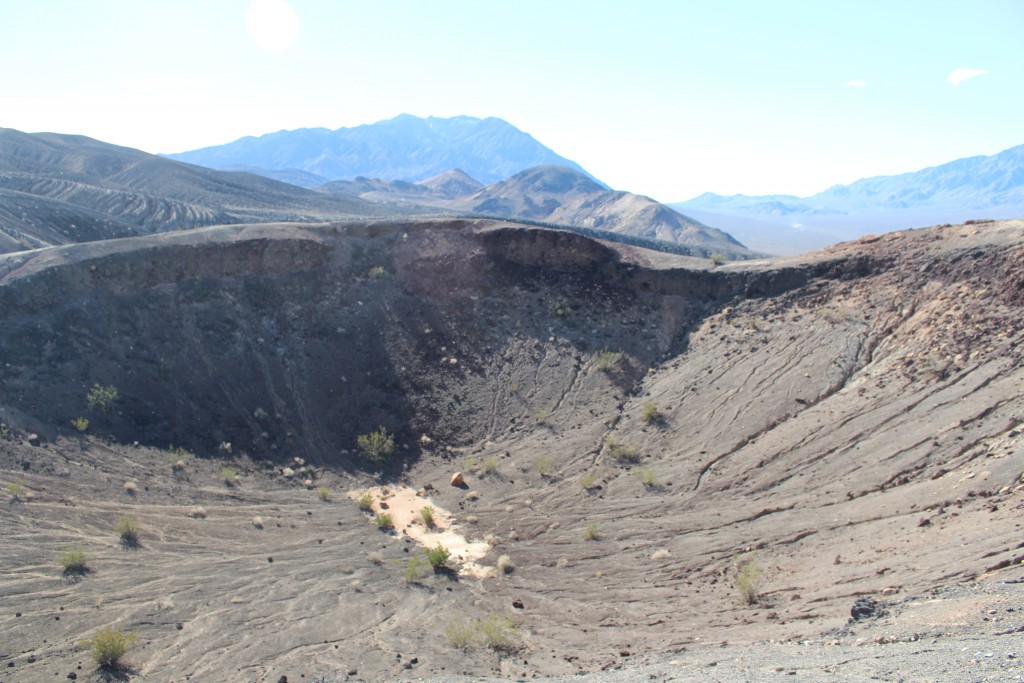
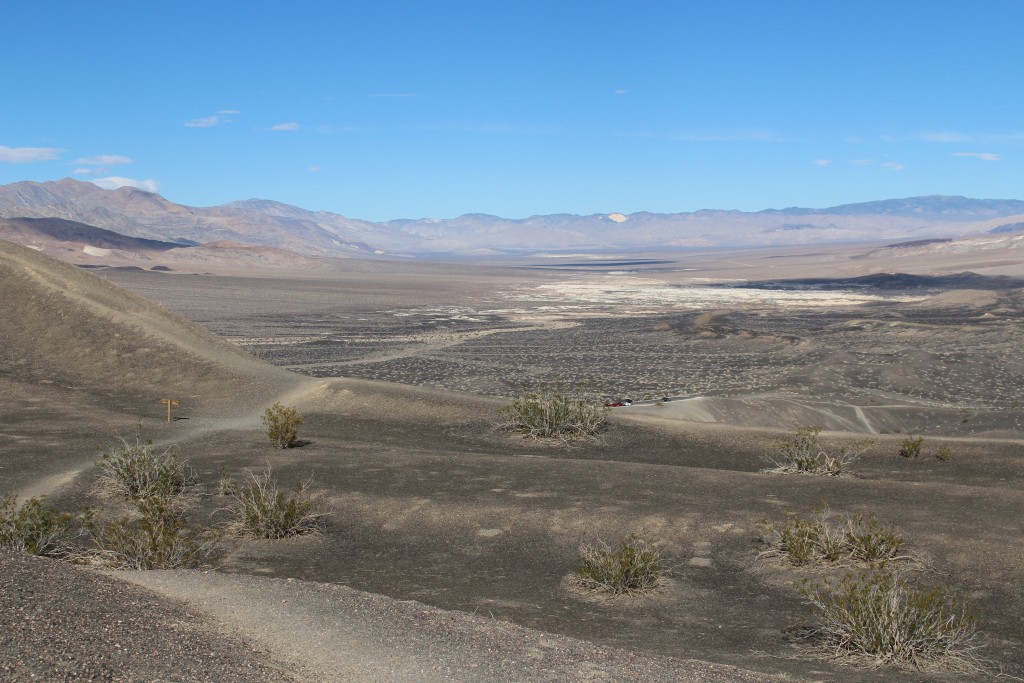
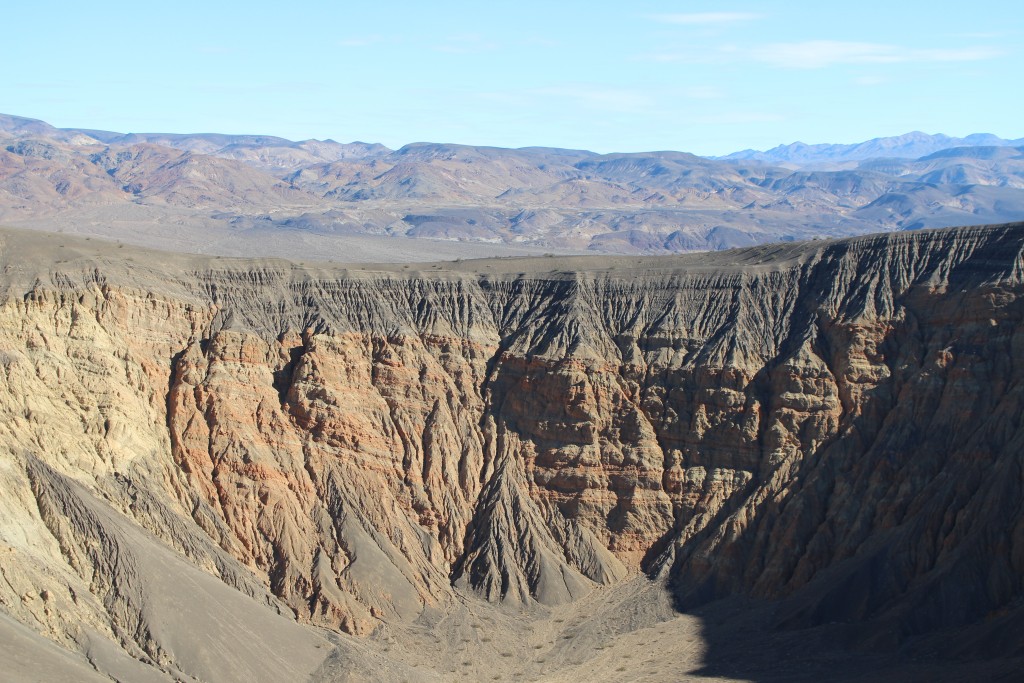
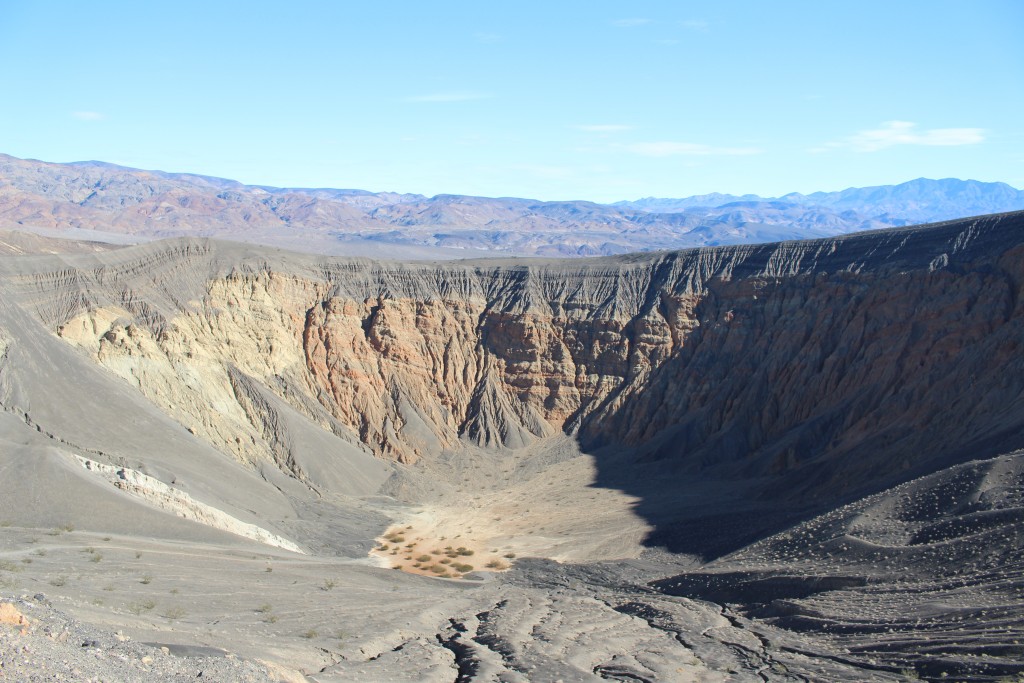
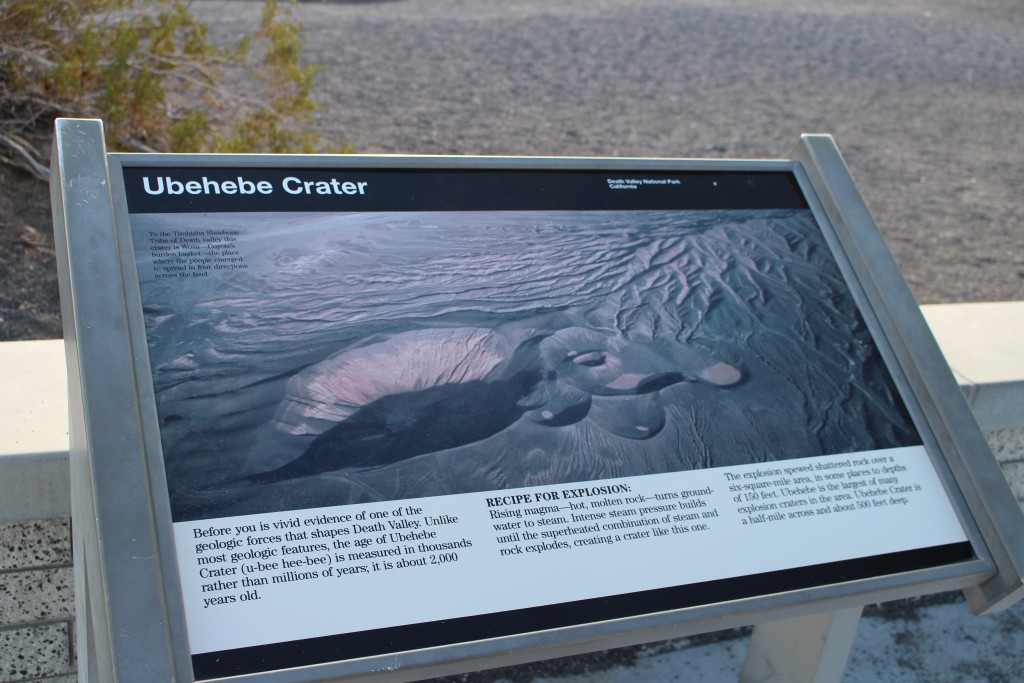
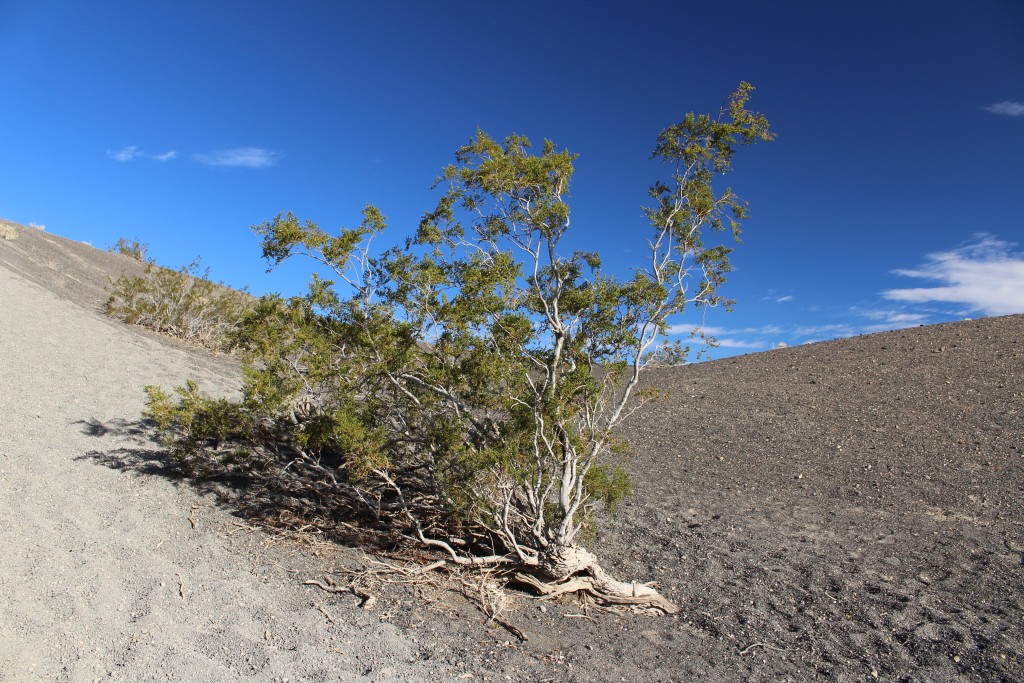
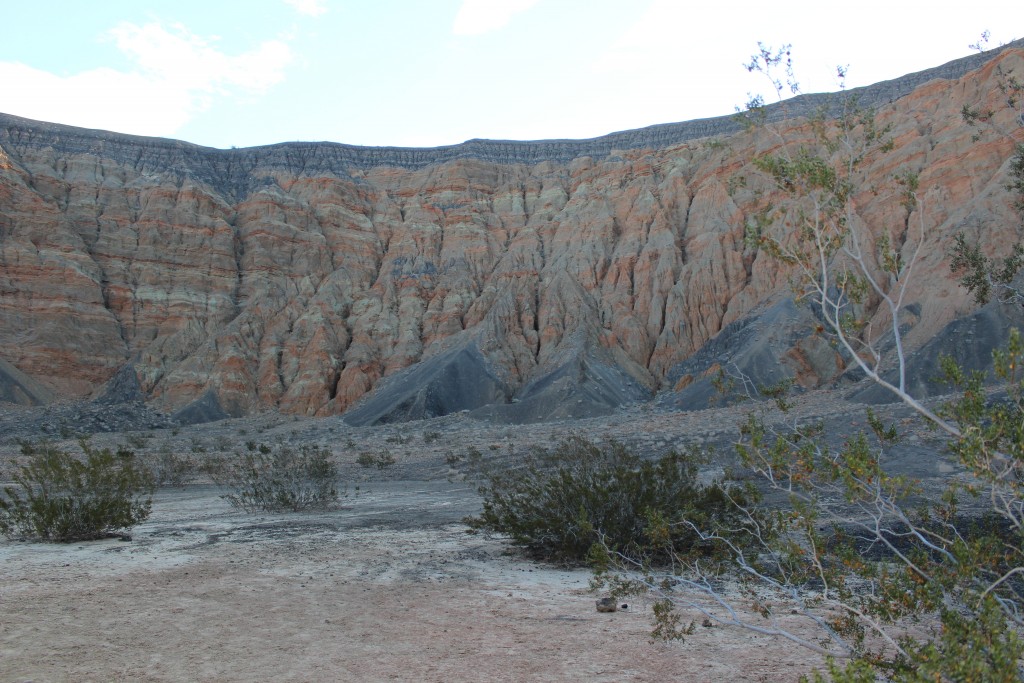
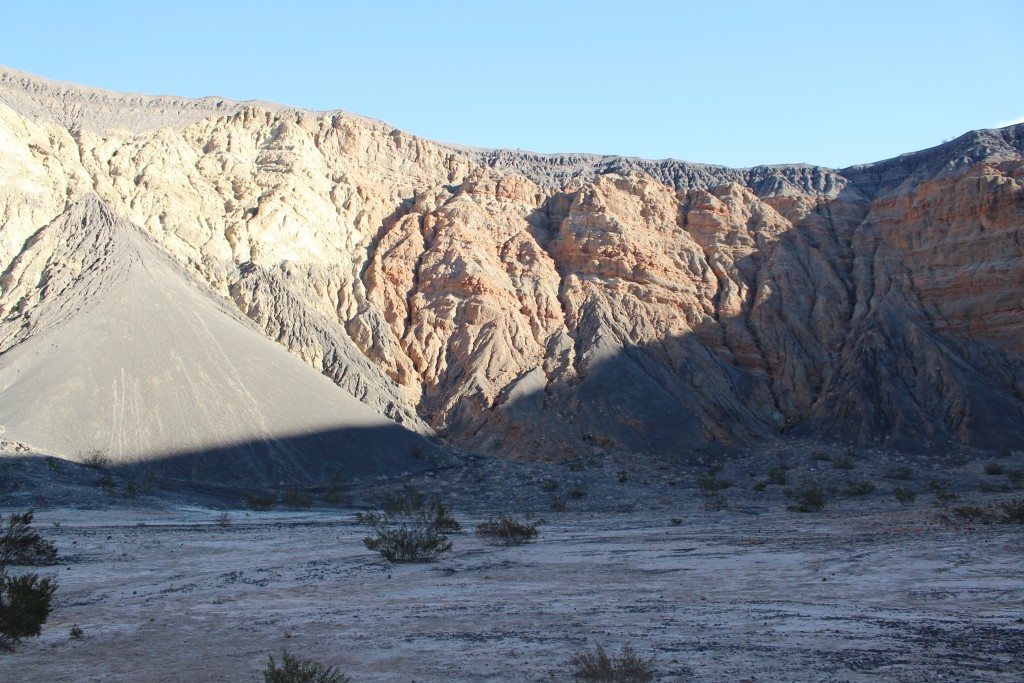
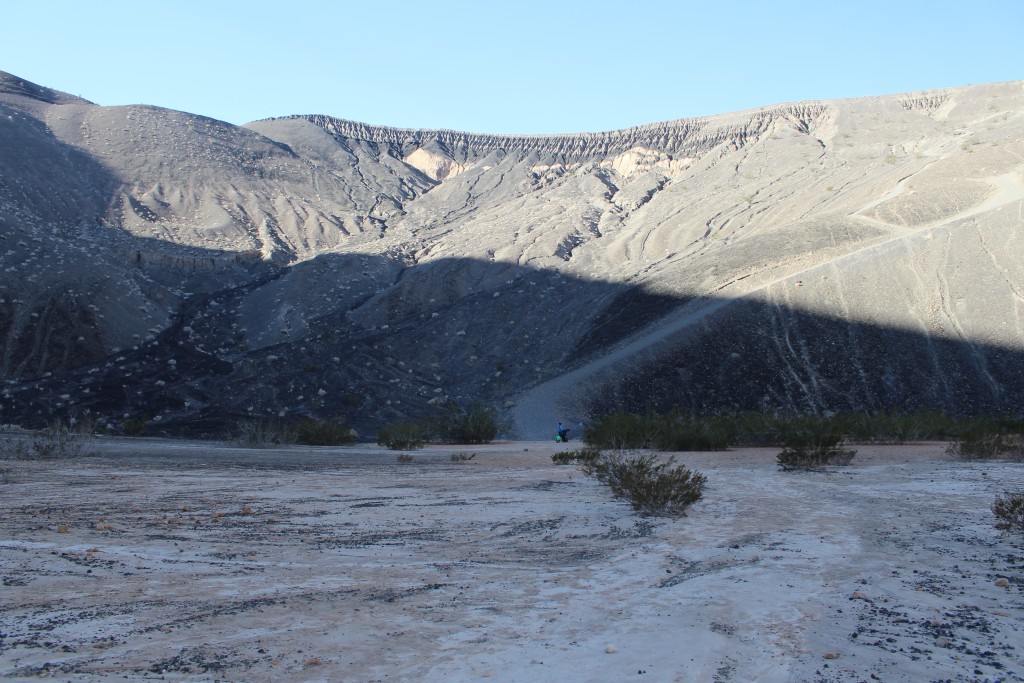
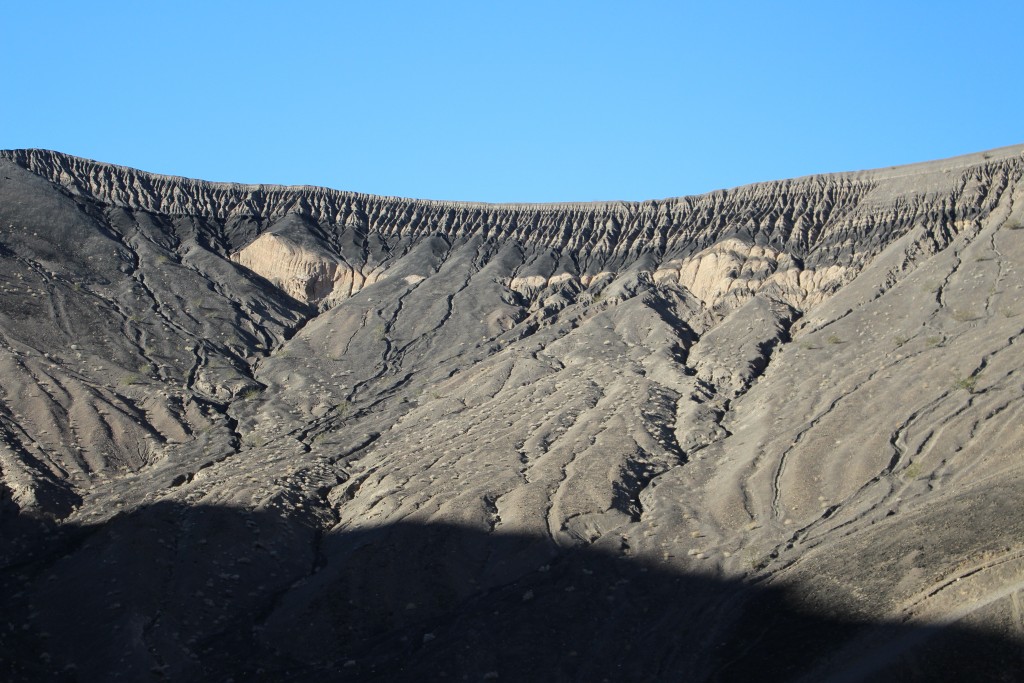
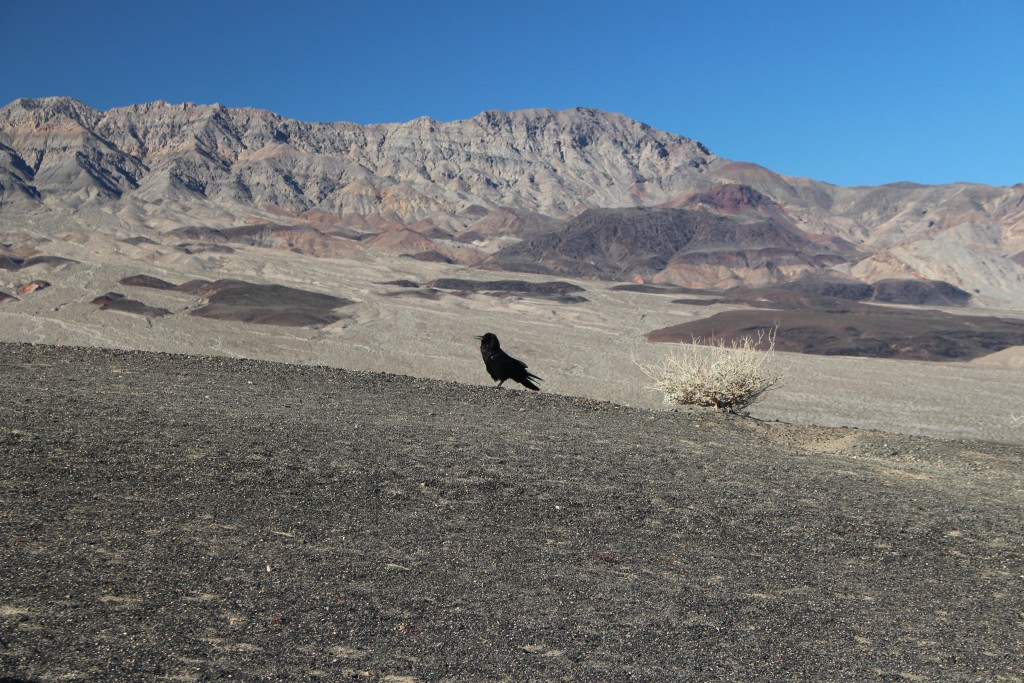
One comment